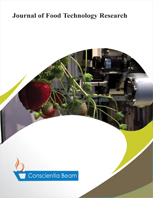Nanotechnologies for increasing the productivity and quality of potatoes in a changing climate
DOI:
https://doi.org/10.18488/jftr.v12i1.4150Abstract
The objective of this study is to examine the impact of a pre-sowing treatment of potato tubers with metal nanoparticles (NPs) for plant protection against phytopathogens in a changing climate. The research was conducted over a period of three years under conditions of increasing average air temperature and decreasing rainfall, which were conducive to the development of potato diseases. The study involved the development of nanobiopreparations containing Fe, Zn, Cu, Mo, Mg, Mn, and B nanoparticles (NPs) in a polymer. Three-year observations showed that the optimal composition of the preparation contains (Zn 10-2% + Cu 10-8% + Fe 10-6% + Mo 10-8%) NPs. The potato tubers were pre-treated with NPs in polymer, resulting in a 52% decrease in the prevalence of A. solani and a 4.6-fold reduction in the degree of plant damage in 2018. In 2019, both indicators exhibited a 2-fold decrease. In 2021, a 20% decrease in the prevalence of A. solani was observed, along with a 40% reduction in the degree of plant damage when compared to the control. The pre-sowing treatment of potato tubers with NPs in the polymer composition increased crop yield and commercial tubers. The results obtained from this study indicate the practical significance of nanotechnology in potato production.

